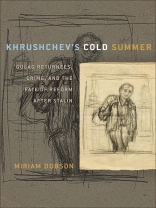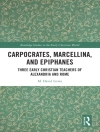Between Stalin’s death in 1953 and 1960, the government of the Soviet Union released hundreds of thousands of prisoners from the Gulag as part of a wide-ranging effort to reverse the worst excesses and abuses of the previous two decades and revive the spirit of the revolution. This exodus included not only victims of past purges but also those sentenced for criminal offenses.
In Khrushchev’s Cold Summer, Miriam Dobson explores the impact of these returnees on communities and, more broadly, Soviet attempts to come to terms with the traumatic legacies of Stalin’s terror. Confusion and disorientation undermined the regime’s efforts at recovery. In the wake of Stalin’s death, ordinary citizens and political leaders alike struggled to make sense of the country’s recent bloody past and to cope with the complex social dynamics caused by attempts to reintegrate the large influx of returning prisoners, a number of whom were hardened criminals alienated and embittered by their experiences within the brutal camp system.
Drawing on private letters as well as official reports on the party and popular mood, Dobson probes social attitudes toward the changes occurring in the first post-Stalin decade. Throughout, she features personal stories as articulated in the words of ordinary citizens, prisoners, and former prisoners. At the same time, she explores Soviet society’s contradictory responses to the returnees and shows that for many the immediate post-Stalin years were anything but a breath of spring air after the long Stalinist winter.
表中的内容
Introduction Part I. Re-imagining the Soviet World after Stalin, 1953–1956
1. 1953: ‘The Most Painful Year’
2. Prisoners and the Art of Petitioning, 1953–1956
3. Heroes, Enemies, and the Secret Speech Part II. Stalin’s Outcasts Return: Moral Panic and the Cult of Criminality
4. Returnees, Crime, and the Gulag Subculture
5. The Redemptive Mission
6. A Return to Weeding Part III. A Fragile Solution? From the Twenty-Second Party Congress to Khrushchev’s Ouster
7. 1961: Clearing a Path to the Future
8. Literary Hooligans and Parasites ConclusionBibliography
Index
关于作者
Miriam Dobson is Lecturer in Modern History at the University of Sheffield. She is the coeditor of Reading Primary Sources: The Interpretation of Texts from Nineteenth- and Twentieth-Century History.












